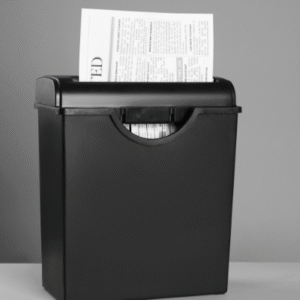In any professional setting, the reception area is the first point of contact for visitors, clients, and employees alike. It sets the tone for the entire experience and often reflects the company’s brand identity, professionalism, and culture. A well-designed reception counter plays a crucial role in creating a welcoming and functional environment. Beyond just a place to check in or ask questions, the reception counter acts as a centerpiece that combines aesthetics with practicality. Understanding the importance of the reception counter and how to choose the right one can significantly enhance the overall office atmosphere and operational efficiency.
Functionality and Design: Balancing Form and Practicality
A reception counter is more than just a desk; it is a multifunctional workspace tailored to the needs of receptionists and visitors. It must be designed to facilitate smooth interactions, accommodate technological equipment, and provide enough space for organizing documents, computers, and other essential office tools. The height, length, and layout of the reception counter are vital considerations to ensure it is ergonomic for staff while being inviting to guests. Modern reception counters often feature integrated cable management systems to keep wires tidy and maintain a clean, professional look. Additionally, built-in storage options like drawers and shelves help keep the reception area organized and clutter-free, improving the overall workflow.
The design of the reception counter should also align with the company’s branding and interior decor. Whether the office style is sleek and contemporary, traditional and classic, or creative and eclectic, the reception counter must complement this aesthetic. Materials such as wood, glass, metal, or laminate are popular choices, each offering different textures and finishes that can create distinct visual effects. For example, a wooden reception counter can evoke warmth and approachability, while a glass counter may project modernity and transparency. Thoughtful lighting around or within the counter further enhances its visual appeal and ensures the reception area is bright and welcoming.
Enhancing Visitor Experience and First Impressions
The reception counter is often the first thing visitors notice upon entering an office. Therefore, its design and functionality have a direct impact on first impressions. A well-designed reception counter communicates professionalism, organization, and attention to detail. Visitors who feel welcomed and comfortable are more likely to have a positive perception of the company. It is essential that the reception counter be positioned strategically within the reception area to be easily visible and accessible. This positioning ensures that guests do not have to search for assistance, contributing to a smooth and pleasant arrival experience.
In addition to physical design, the reception counter also serves as a communication hub. It is where visitors are greeted, checked in, and provided with information or directions. Some reception counters include digital kiosks or tablets for self-check-in options, streamlining the process and reducing wait times. Others may incorporate security features, such as discreet compartments for visitor badges or access cards. A reception counter tailored to these needs helps reinforce a sense of security and professionalism while catering to the practical aspects of visitor management.
Customization and Versatility for Diverse Business Needs
Every business has unique requirements, and the reception counter should reflect those differences. Customization options allow companies to tailor counters to fit specific space constraints, branding guidelines, and functional demands. Whether an office requires a simple, compact counter for a small lobby or a large, elaborate structure for a high-traffic corporate headquarters, custom reception counters provide flexibility in size, shape, and features.
Versatility is another critical factor. Many reception counters are modular, allowing businesses to reconfigure layouts as their needs evolve. This adaptability is particularly useful in dynamic office environments where growth or restructuring is common. Additionally, some reception counters come with adjustable heights or movable components to accommodate both standing and seated interactions, catering to diverse user preferences and enhancing ergonomic comfort.
For industries such as healthcare, hospitality, or education, reception counters often have specialized designs to meet regulatory requirements or unique operational workflows. For example, healthcare reception counters may include sneeze guards or privacy panels to protect patient information, while hospitality counters might prioritize aesthetics and guest experience.
Durability and Maintenance: Long-Term Investment Considerations
A reception counter represents a significant investment, so durability and ease of maintenance are essential factors. High-quality materials and construction ensure that the counter withstands daily wear and tear without losing its appeal or functionality. Surfaces should be resistant to scratches, stains, and impacts, especially in busy offices with high foot traffic.
Maintenance is simplified when the reception counter has smooth surfaces and minimal crevices where dirt can accumulate. Easy-to-clean materials like laminate or treated wood finishes save time and effort for cleaning staff, keeping the reception area looking polished and professional at all times. Additionally, choosing a counter with replaceable components, such as panels or countertops, extends its lifespan and reduces the need for complete replacements.
When investing in a reception counter, it’s also wise to consider future-proofing options, such as integrating smart technology or ensuring compatibility with new office equipment. These considerations help businesses avoid costly upgrades and disruptions in the future.
The Psychological Impact of an Inviting Reception Area
Beyond physical attributes, the reception counter contributes significantly to the psychological atmosphere of an office. The reception area is often a place where visitors wait, sometimes anxiously, before meetings or appointments. An inviting, thoughtfully designed reception counter can help reduce stress and create a sense of calm. Comfortable seating nearby, tasteful decor, and an uncluttered counter work together to create a positive environment.
Colors and materials used in the reception counter also influence mood and perception. Warm, natural tones tend to evoke relaxation and friendliness, while bold, sharp contrasts might communicate energy and innovation. The reception counter, therefore, becomes an integral part of how a company expresses its values and personality to the outside world.
Conclusion: Elevate Your Workspace with the Right Reception Counter
Choosing the right reception counter is a strategic decision that affects both the functionality and aesthetics of your office space. It serves as a critical touchpoint for first impressions, operational efficiency, and visitor satisfaction. By selecting a reception counter that balances design, ergonomics, customization, durability, and psychological impact, businesses can create a welcoming and professional environment that supports their brand and operational goals.
For companies looking to enhance their office environment, “office furniture” offers a wide range of reception counters designed to meet diverse needs and styles. Investing in a high-quality reception counter from a trusted provider ensures that your reception area leaves a lasting positive impression on everyone who walks through your doors.


